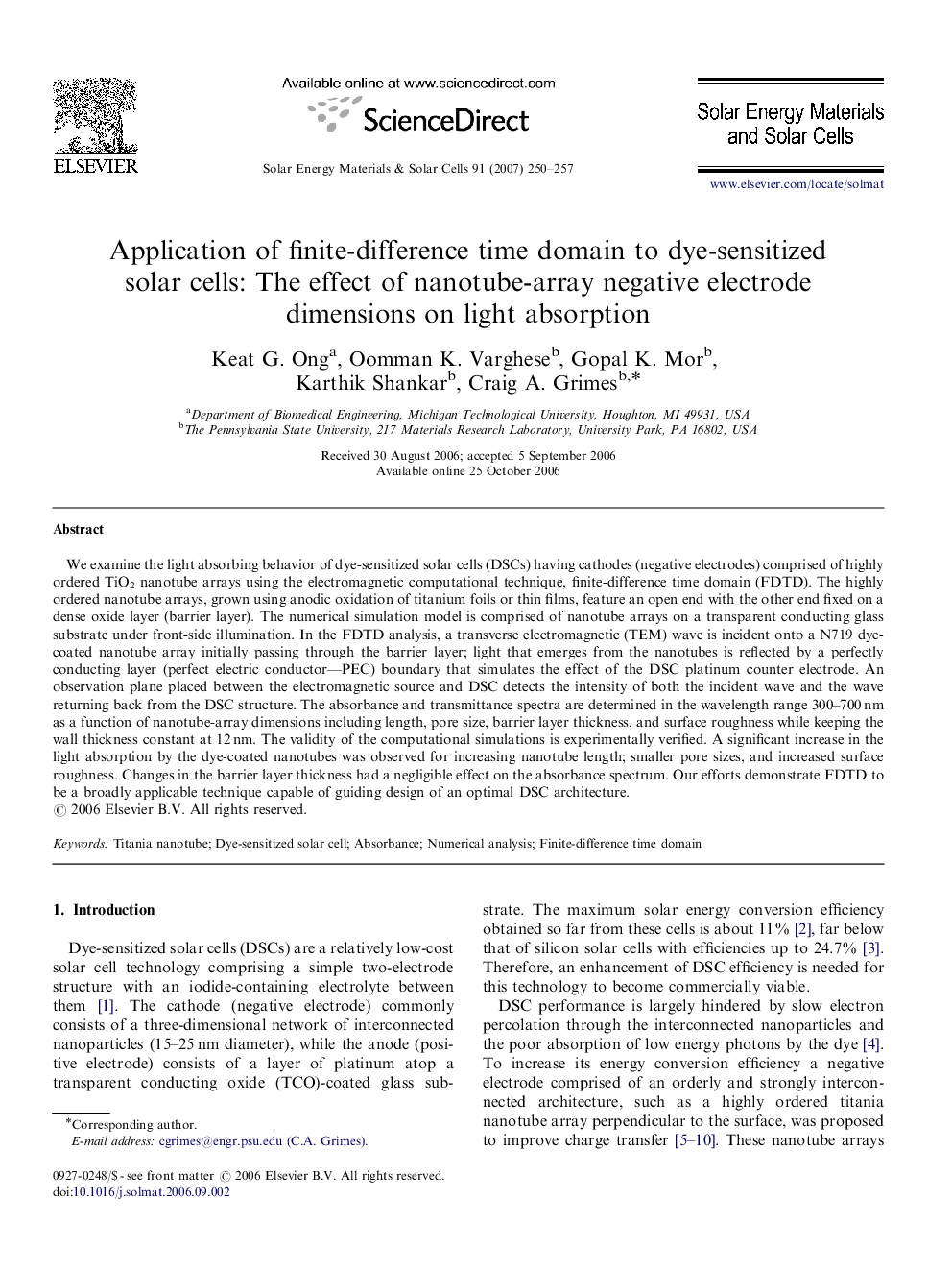| کد مقاله | کد نشریه | سال انتشار | مقاله انگلیسی | نسخه تمام متن |
|---|---|---|---|---|
| 80749 | 49398 | 2007 | 8 صفحه PDF | دانلود رایگان |

We examine the light absorbing behavior of dye-sensitized solar cells (DSCs) having cathodes (negative electrodes) comprised of highly ordered TiO2 nanotube arrays using the electromagnetic computational technique, finite-difference time domain (FDTD). The highly ordered nanotube arrays, grown using anodic oxidation of titanium foils or thin films, feature an open end with the other end fixed on a dense oxide layer (barrier layer). The numerical simulation model is comprised of nanotube arrays on a transparent conducting glass substrate under front-side illumination. In the FDTD analysis, a transverse electromagnetic (TEM) wave is incident onto a N719 dye-coated nanotube array initially passing through the barrier layer; light that emerges from the nanotubes is reflected by a perfectly conducting layer (perfect electric conductor—PEC) boundary that simulates the effect of the DSC platinum counter electrode. An observation plane placed between the electromagnetic source and DSC detects the intensity of both the incident wave and the wave returning back from the DSC structure. The absorbance and transmittance spectra are determined in the wavelength range 300–700 nm as a function of nanotube-array dimensions including length, pore size, barrier layer thickness, and surface roughness while keeping the wall thickness constant at 12 nm. The validity of the computational simulations is experimentally verified. A significant increase in the light absorption by the dye-coated nanotubes was observed for increasing nanotube length; smaller pore sizes, and increased surface roughness. Changes in the barrier layer thickness had a negligible effect on the absorbance spectrum. Our efforts demonstrate FDTD to be a broadly applicable technique capable of guiding design of an optimal DSC architecture.
Journal: Solar Energy Materials and Solar Cells - Volume 91, Issue 4, 15 February 2007, Pages 250–257